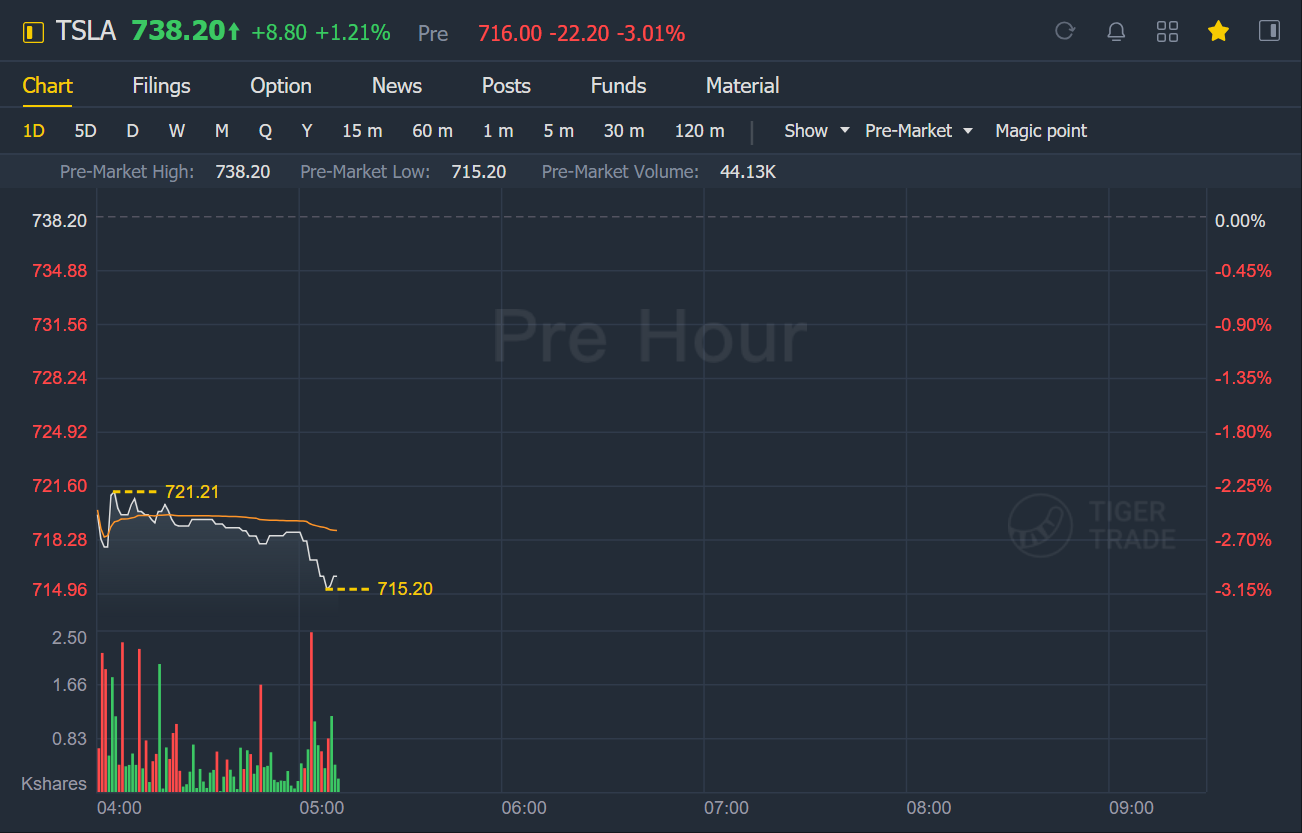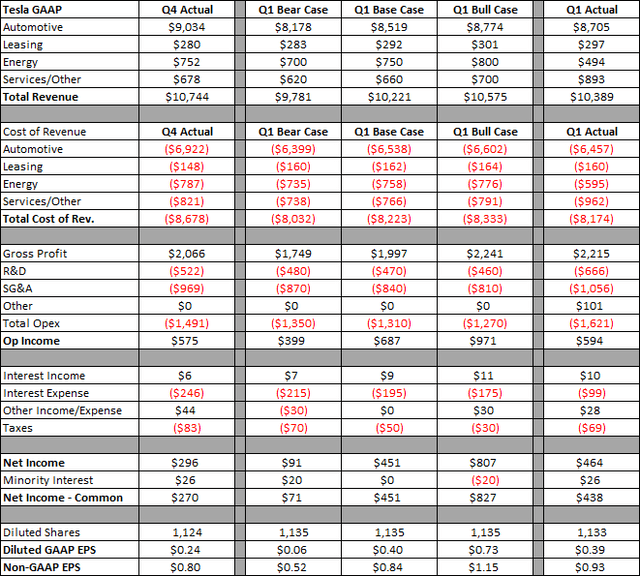5:15 EST,Tesla fell more than 3% in premarket trading.Tesla Disappoints With Q1 Results.
After the bell on Monday, we received first quarter results from electric vehicle maker Tesla (TSLA), seen inthis investor letter. With the stock having traded sideways this year after a massive rally in 2020, the street was looking for solid results and a major production update to get shares going again. Unfortunately, it was another quarter where the overall results were rather lackluster, which sent shares lower.
Tesla reported revenues of about $10.39 billion, which some sites are going to report as a headline beat. If you use a site like Bloomberg, it will bea miss comparedto a street average of $10.42 billion. As you can see in the graphic below, a number of sites also had a "low" estimate of $8.20 billion, which is either an analyst that hasn't updated in a while or a number that was put there to bring the overall average down by about $100 million.
(Source: Seeking Alpha Tesla estimates page,seen here)
As I mentioned inmy earnings preview article, I wouldn't be concerned with the revenue number unless there was a major outlier. Well, that turned out to be the case, because regulatory credit sales soared to $518 million, whereas most expectations called for them to be down from Q4 levels. Excluding these credit sales, Tesla's average selling price per vehicle delivered declined by $3,444, primarily as there were no deliveries of the new S/X vehicles. Tesla's energy revenues also dropped significantly over Q4 levels, which also resulted in that division reporting terrible margins.
Tesla's automotive margins rose by 240 basis points quarter over quarter, although almost half of that was due to the increase in credit sales. The company did, however, report a lot more operating expenses than most were expecting, primarily due to another CEO award milestone becoming probable. Management also took advantage of the rise in bitcoin to pad the bottom line, reporting a $101 million gain from Bitcoin sales (reported in the other opex line below). The table below shows Tesla's overall results compared to my three cases as well as Q4 results.
If you take out the regulatory credit revenue and Bitcoin gains, Tesla's pre-tax result was an $86 million loss. It turned out that my GAAP EPS estimate was just a penny off, where I had too much product costs but not enough operating costs. The second half of that flowed through to non-GAAP results thanks to that CEO award resulting in a lot more stock-based compensation. Overall, these results were not as strong as many were looking for, which is part of the reason why the stock dipped about 2% in initial after-hours trading.
The second key I talked about in my earnings preview was Tesla's production and its yearly forecast. There had been a lot of talk recently about thecompany potentially talking abouta million units of production this year. However, management did not really update its forecast in the investor letter, only talking about its plan to exceed 50% growth in deliveries this year. In the table below, you can see how the company's installed capacity has trended, but I will note that there was no unit increase from the Q4 report.
(The "actual / 4-qtr production" figure is based on the latest quarter's production divided by the 4-qtr rolling average, so Q1 2021's 88.24% figure comes from the 180,338 units divided by the 204,375 rolling average.Source: Tesla quarterly reports on IR site,seen here)
New Model S vehicle deliveries should start shortly, as opposed to Elon Musk's previous comments for them starting in February of this year. The first model Y units from Texas and Berlin should be delivered by the end of the year, along with the Semi. However, I should note that up until this weekend, Tesla's European sites showed Model Y production starting "mid-year", so this is a bit of a push back from that forecast.
When we look at the balance sheet, Tesla reported a $2.2 billion decrease in its cash and cash equivalents in Q1 to $17.1 billion. This was mainly due to $1.2 billion net outflows in both debt as well as Bitcoin. This was partially offset by $293 million in free cash flow. However, just as we've seen in the past, accounts payable and accrued liabilities rose by $815 million, so Tesla would have not been free cash flow positive if it had paid some more of its bills during the quarter. Usually, this is function of rising production, but that barely happened in Q1 plus we had much lower costing vehicles accounting for a larger percentage of production with no new Model S/X units produced. Accounts receivable also increased very slightly over Q4 levels despite the sequential decline in revenues of more than $350 million.
It will be interesting to see the reaction to this report, more than just an hour or so of after-hours trading where shares are down about $16 to $722. As the chart below shows, the stock has recently regained the 50-day moving average, which could provide some support. However, that key technical level is still declining, which could set up the dreaded death cross in a month or so if the current trend continues.
In the end, Tesla's Q1 results were a bit disappointing. Revenues were basically in line with most expectations, but that was as a result of the largest quarter ever of regulatory credit sales. Excluding those highly profitable sales as well as some Bitcoin gains, Tesla would have lost money for the quarter. Also, management did not provide the big guidance boost many were hoping for, and the stock dipped about 2% in the after-hours session. Once we get the 10-Q filing and can fully digest all of the numbers, I'll be back with some thoughts on what to do with shares moving forward.



